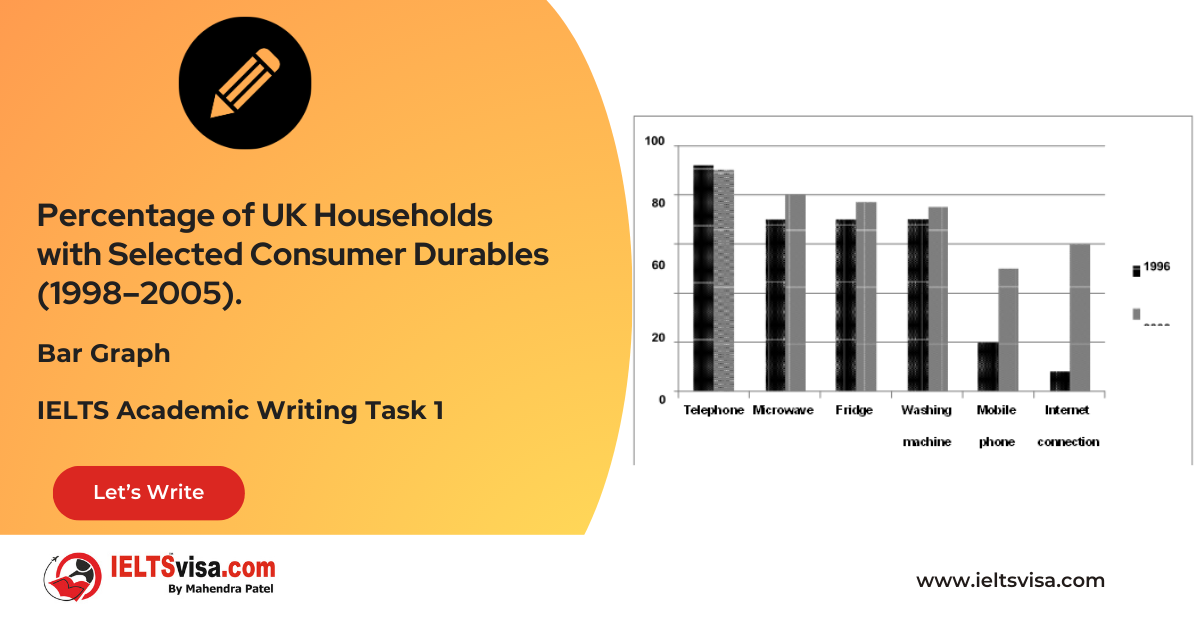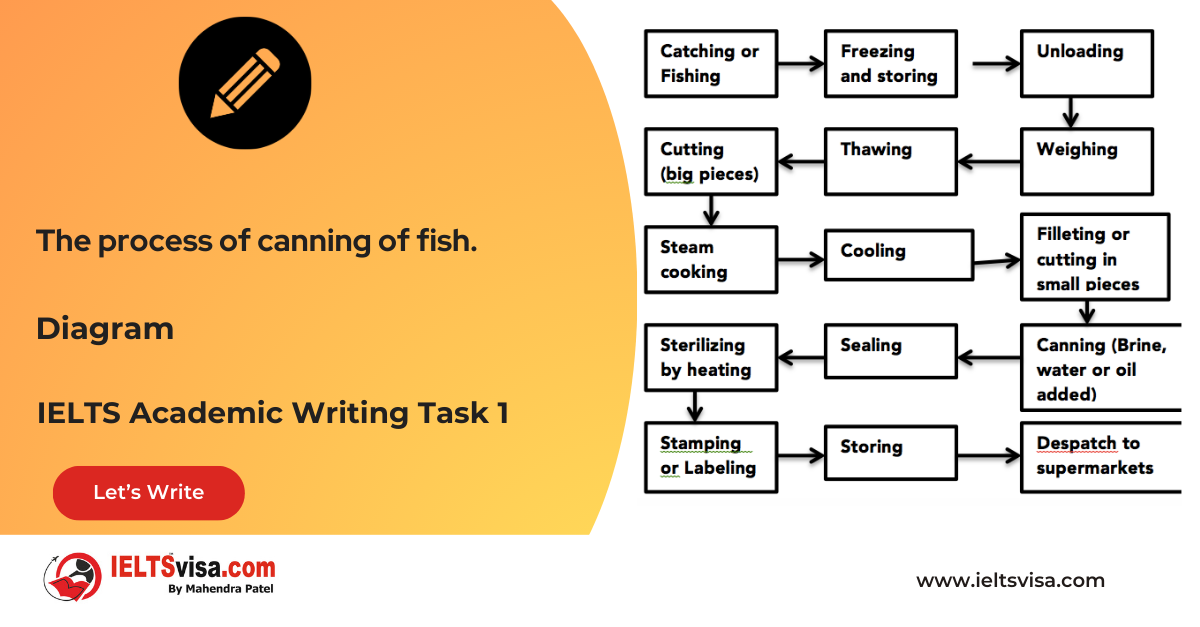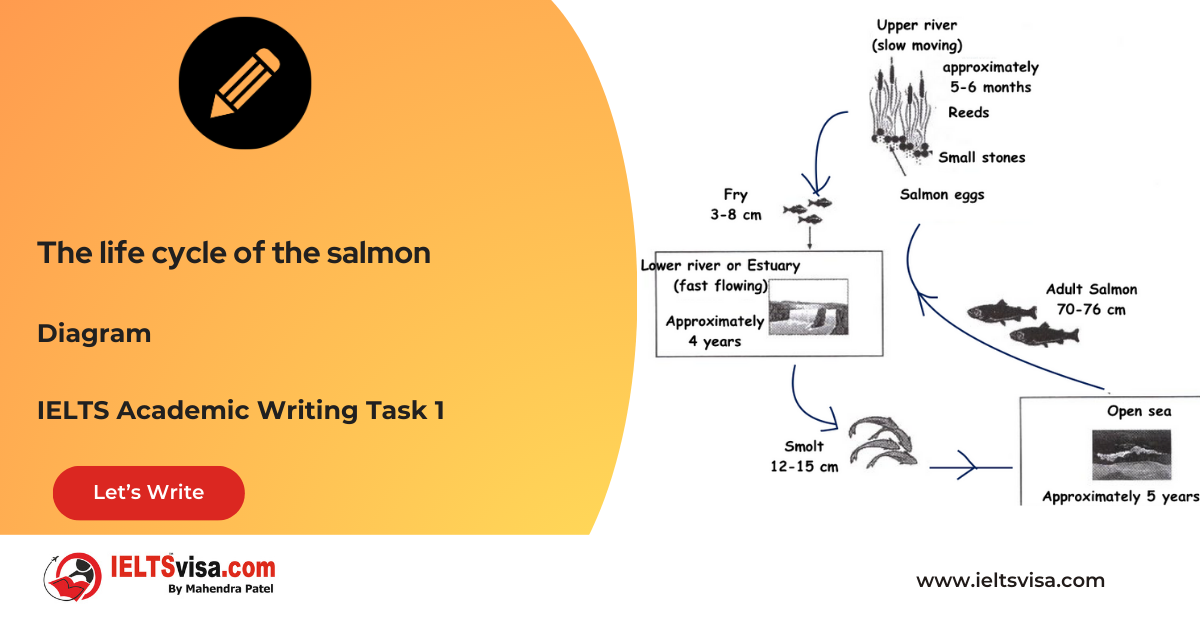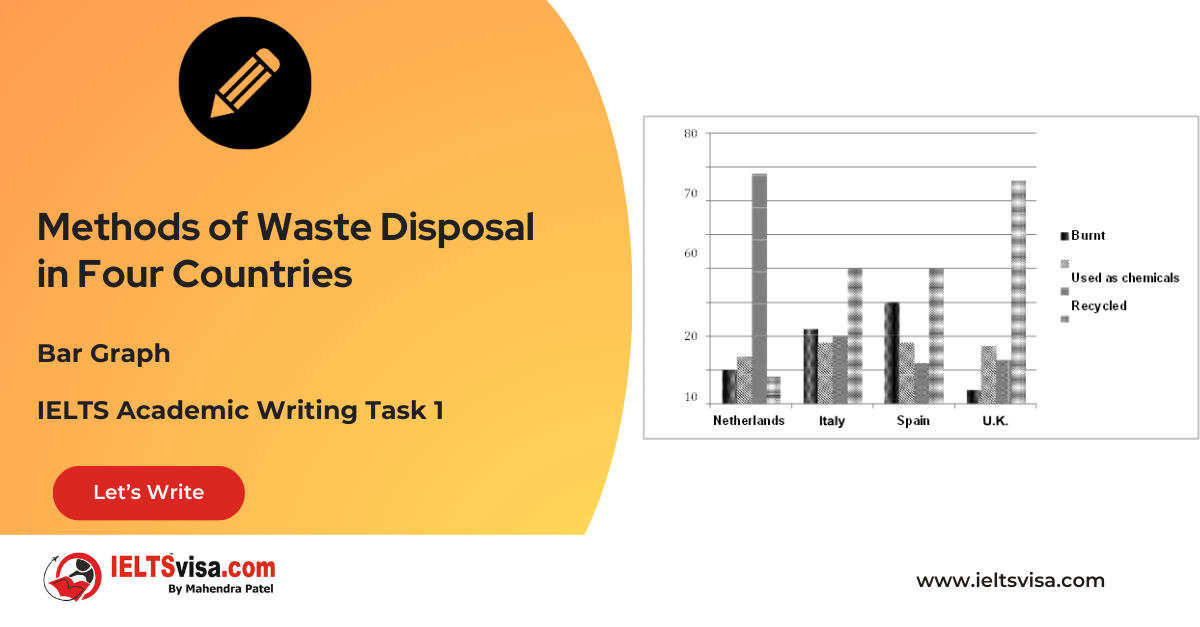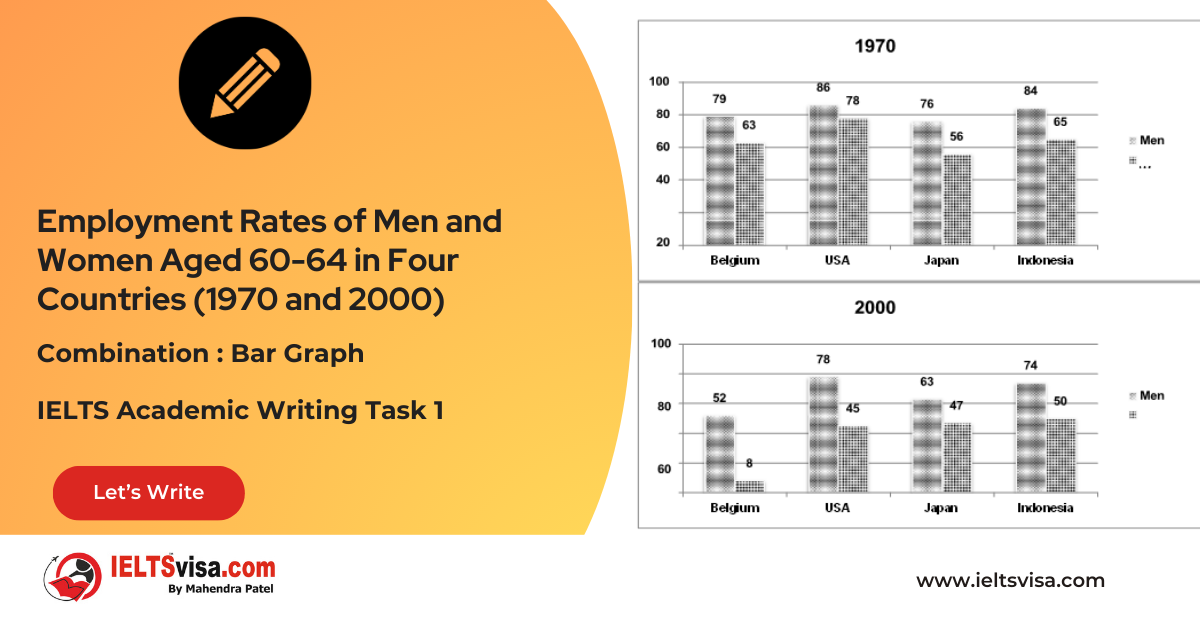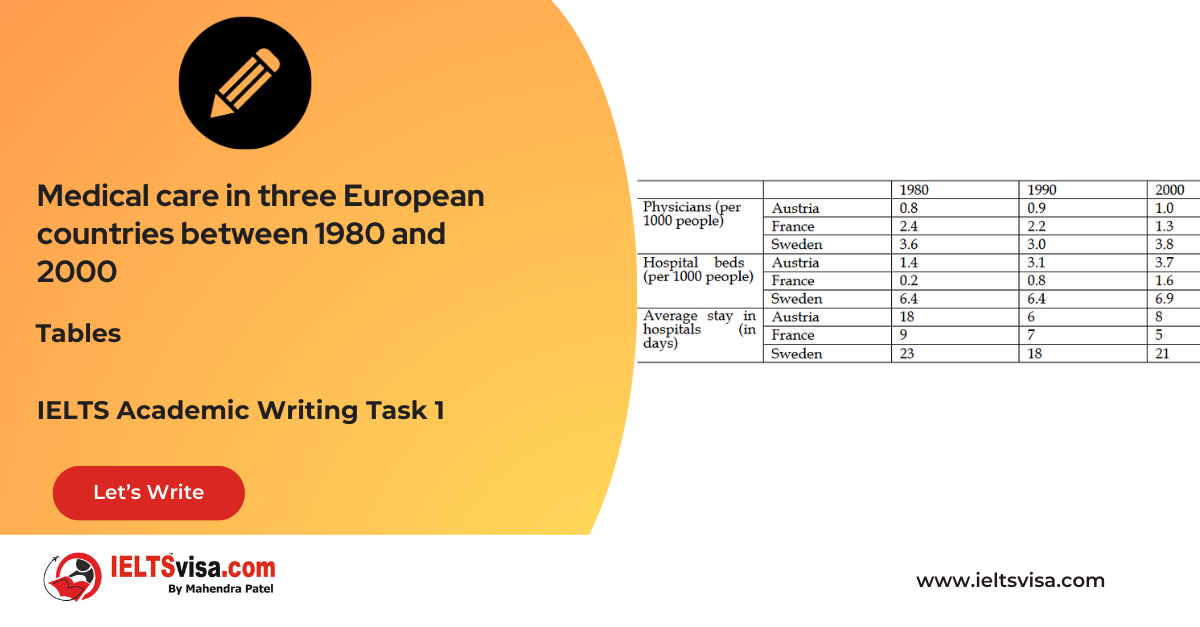The process of getting a driving licence
IELTS Academic Writing Task 1 - Process
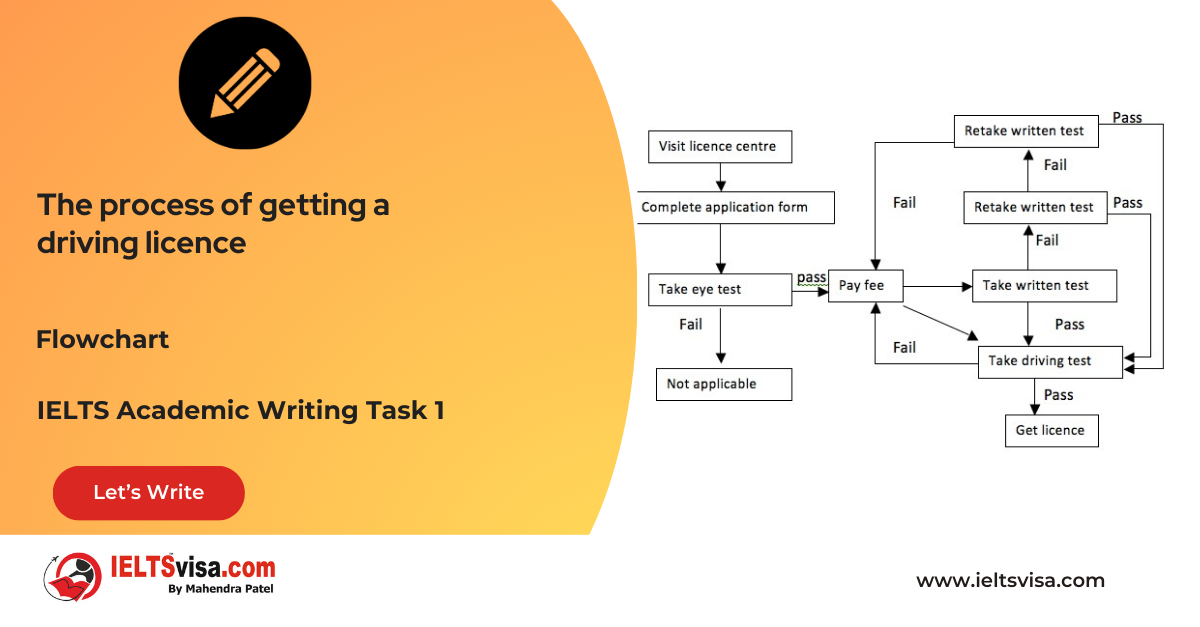
IELTS Writing Task 1 Question
The diagram below shows the process of getting a driving licence. Write a report for a university lecturer describing the information below.

Common Questions for the Process Flowchart
1. Graph Type: Flowchart
2. Title: Process of Obtaining a Driving Licence
3. What are the units of measurement?: Not applicable
4. Who: Individuals applying for a driving licence
5. When: Not specified
6. Where: At a driving licence centre
7. Topic: Steps involved in acquiring a driving licence Comparison Showing and Trends
Comparison Showing and Trends Any change over time (such as an increase or a decrease) is a trend.
Comparison 1: Initial Steps
- Details:
1. Application: Visit the licence centre and complete the application form.
2. Eye Test: Mandatory step after form submission.
3. Outcome: Failure in the eye test results in termination of the process.
Comparison 2 : Subsequent Tests
- Details:
1. Written Test: Taken after passing the eye test; can be attempted up to three times at no additional fee.
2. Driving Test: Required after passing the written test.
3. Fees: Payment is required for retaking the written or driving tests if the applicant fails.
Sample Answer
The flowchart outlines the comprehensive process of obtaining a driving licence, highlighting the numerous steps involved from the initial application to the final issuance of the licence.
Initially, an individual must visit a licence centre to complete an application form. Once the form is submitted, the applicant is required to undergo an eye test. If the applicant fails the eye test, the process is terminated, and they are not eligible for a licence. However, passing the eye test allows the individual to pay the required fee and proceed to the written test.
The written test can be attempted three times without an additional fee. If the applicant fails all three attempts, they must again pay the fee to retake the test. The applicant becomes eligible for the driving test after successfully passing the written test. If they clear the driving test, the licence is issued. Conversely, failing the driving test necessitates a fee payment to retake it.
Overall, the process of acquiring a driving licence involves several crucial steps, emphasizing the importance of passing each stage to attain the final goal.
Top 29 Vocabulary
| Vocabulary (type) | Meaning | Synonyms | Examples |
| Flowchart (noun) | A diagram representing a process or workflow | Diagram, chart | “The flowchart illustrates the application process.” |
| Mandatory (adj) | Required by law or rules | Compulsory, obligatory | “The eye test is mandatory for all applicants.” |
| Eligibility (noun) | The state of being qualified or entitled | Qualification, fitness | “Passing the eye test is necessary for eligibility.” |
| Applicant (noun) | A person applying for something | Candidate, requester | “Each applicant must complete the form.” |
| Issuance (noun) | The act of giving or distributing something | Distribution, release | “The issuance of the licence follows the driving test.” |
|
Outline (verb) |
To give a summary or overview of something |
Summarize, describe |
“The flowchart outlines the steps to obtain a driving licence.” |
|
Comprehensive (adj) |
Including all or nearly all aspects |
Complete, thorough |
“The flowchart provides a comprehensive view of the process.” |
|
Initial (adj) |
Occurring at the beginning |
First, primary |
“The initial step involves submitting an application form.” |
|
Submission (noun) |
The act of presenting something for consideration |
Presentation, proposal |
“The submission of the application form is required.” |
|
Terminate (verb) |
To bring something to an end |
End, stop |
“Failing the eye test will terminate the process.” |
|
Eligible (adj) |
Having the right to do or obtain something |
Qualified, entitled |
“Only eligible applicants can proceed to the next stage.” |
|
Fee (noun) |
A fixed amount of money paid for a service or privilege |
Charge, payment |
“Applicants must pay a fee to proceed to the driving test.” |
|
Attempt (noun) |
An effort to achieve or complete something |
Effort, trial |
“The written test can be attempted three times without extra fees.” |
|
Retake (verb) |
To take something again after failing |
Reattempt, retry |
“A failed driving test requires a fee to retake it.” |
|
Crucial (adj) |
Extremely important or necessary |
Vital, essential |
“Passing the written test is a crucial step in the process.” |
|
Attain (verb) |
To succeed in achieving something |
Achieve, obtain |
“Applicants must pass every step to attain a driving licence.” |
|
Procedure (noun) |
An established way of doing something |
Process, method |
“The procedure involves several steps, including tests and fee payments.” |
|
Undergo (verb) |
To experience or be subjected to something |
Experience, endure |
“All applicants must undergo an eye test.” |
|
Assessment (noun) |
The evaluation or estimation of the quality of something |
Evaluation, test |
“The eye test serves as an initial assessment of eligibility.” |
|
Stage (noun) |
A specific point in a process |
Phase, step |
“The process includes multiple stages to ensure thorough testing.” |
|
Proceed (verb) |
To continue or move forward with something |
Continue, advance |
“Passing the written test allows applicants to proceed to the driving test.” |
|
Issue (verb) |
To officially give or distribute something |
Provide, deliver |
“The licence is issued after passing the driving test.” |
|
Requirement (noun) |
Something necessary for a particular purpose |
Prerequisite, obligation |
“Passing the eye test is a key requirement for eligibility.” |
|
Highlight (verb) |
To emphasize or make something more noticeable |
Emphasize, underscore |
“The diagram highlights the importance of each step.” |
|
Acquiring (verb) |
The act of gaining possession of something |
Obtaining, receiving |
“Acquiring a driving licence requires successful completion of all tests.” |
|
Renewable (adj) |
Capable of being used again or extended |
Extendable, reusable |
“Certain parts of the process, such as the written test, may require renewable fees.” |
|
Accessibility (noun) |
The quality of being easy to reach or use |
Availability, usability |
“The accessibility of information about the process is important.” |
|
Failure (noun) |
Lack of success in achieving a goal |
Defeat, setback |
“Failure in any step requires additional effort to continue the process.” |
|
Sustainability (noun) |
The ability to maintain or continue over time |
Durability, stability |
“The system ensures sustainability by verifying each step rigorously.” |

Our Books
Master IELTS Speaking Part 1
IELTS Writing Task 1 Book
IELTS Writing Task 2 Book
Writing Task 1 Question Types
Practice IELTS Other Modules
IELTS Listening
The IELTS Listening test assesses how well you can understand spoken English in various contexts. It lasts about 30 minutes and is divided into four sections with a total of 40 questions. The listening tasks become increasingly difficult as the test progresses.
IELTS Academic Reading
The IELTS Academic Reading section assesses your ability to understand and interpret a variety of texts in academic settings. It is designed to evaluate a range of reading skills, including skimming for gist, reading for main ideas, reading for detail, understanding inferences, and recognizing a writer's opinions and arguments.
IELTS Speaking
The IELTS Speaking test assesses your ability to communicate in English on everyday topics. It lasts 11-14 minutes and consists of three parts: introduction, cue card, and a discussion based on the cue card topic.
IELTS General Reading
IELTS General Reading tests your ability to understand and interpret various types of texts. Here are some key areas and types of content you can expect to encounter in the reading section, along with tips for effective preparation.
IELTS Academic Writing Task 1
In IELTS Academic Writing Task 1, you are presented with a visual representation of information, such as graphs, charts, tables, or diagrams, and you are required to summarize, compare, or explain the data in your own words.
IELTS General Writing Task 1
In IELTS General Writing Task 1, you are required to write a letter based on a given situation. The letter can be formal, semi-formal, or informal, depending on the prompt. Here’s a breakdown of the key components to include in your letter
IELTS Academic Writing Task 2
In IELTS Academic Writing Task 2, you are required to write an essay in response to a question or topic. Here’s a guide to help you understand the essential elements of this task
IELTS Exam Tips
To succeed in the IELTS exam, practice regularly, familiarize yourself with the test format, improve your vocabulary, develop time management skills, and take mock tests to build confidence.
Grammer for IELTS
Grammar is the foundation of effective communication in English. Understanding tense usage, subject-verb agreement, and sentence structure enhances clarity and coherence in writing and speaking.
Vocabulary for IELTS
Vocabulary plays a crucial role in the IELTS (International English Language Testing System) exam, especially in the Speaking and Writing sections. Here’s an overview of why vocabulary is important and how it impacts your performance
RECENT IELTS SAMPLES QUESTIONS AND ANSWERS
Task 1 – Bar Graph – Percentage of UK Households with Selected Consumer Durables (1998–2005).
[df_adh_heading title_infix="IELTS Writing Task 1 Question" use_divider="on"...
Task 1 – Diagram – The process of canning of fish.
20:00 Start Pause Stop [df_adh_heading title_infix="IELTS Writing Task 1 Question" use_divider="on"...
Task 1 – Diagram – The life cycle of the salmon
20:00 Start Pause Stop [df_adh_heading title_infix="IELTS Writing Task 1 Question" use_divider="on"...
Task 1 – Bar Graph – Methods of Waste Disposal in Four Countries
[df_adh_heading title_infix="IELTS Writing Task 1 Question" use_divider="on"...
Task 1 – Combination : Bar Graph – Employment Rates of Men and Women Aged 60-64 in Four Countries (1970 and 2000)
[df_adh_heading title_infix="IELTS Writing Task 1 Question" use_divider="on"...
Task 1 – Table – The information about medical care in three European countries between 1980 and 2000
20:00 Start Pause Stop [df_adh_heading title_infix="IELTS Writing Task 1 Question" use_divider="on"...

